At May 2013, I had a pleasant experience by visiting Ereveld in Menteng Pulo, Jakarta. Ereveld is a Dutch cemetery located in the middle of Casablanca apartments in Menteng. Different with Kerkhoff which is a public cemetery (you can see it in Museum Taman Prasasti, near Monas), Ereveld is specially dedicated to World War II’s victims. About 70% of people who were buried here are civilians, and another 30% of them are soldiers. They came from four countries: Netherland, US, Australia, and Britain. But there were also Indonesian-origin soldiers buried here, once member of KNIL. Most of them died during the Japanese occupation in Indonesia during WW II. Most people, even Jakartans, are not aware of this magnificent place.
Ereveld in Menteng Pulo is not the only ereveld in Indonesia. There are 7 of them throughout Jakarta (Menteng Pulo and Ancol), Semarang (Candi and Kalibanteng), Bandung (Pandu and Leuwigajah), and Surabaya (Kembang Kuning). Once there were 22 erevelds, scattered all across Indonesia, from Palembang, Balikpapan, Tarakan, Makassar, Manado, and Banjarmasin, where Dutch soldiers fought against Japan or captured as captives. But as the willing of President Soekarno at that time, all buried corpses of Dutch soldiers outside Java had to be moved to the 7 remaining cemeteries in Java.
We can enter Ereveld freely since it is opened for public. But if we want to take pictures, first we have to ask for permission from a Dutch foundation called OGS (Oorlogsgravenstichting) who maintains all of the Dutch military graveyard in the world.
Me and two of my friends were granted permission to visit Ereveld. When we got there, we were warmly welcomed by Mr. Elisa, the coordinator of Ereveld Menteng Pulo (whom was a very friendly and nice person). He explained about the history of Ereveld, which was very interesting for us. He also showed us around the cemetery.
One thing I noted was the tomb of General H. S. Spoor, the last general of KNIL. I was a bit surprised when I saw his grave. First I thought a tomb of a general must be colossal and great like a mausoleum. But the tomb actually has no difference with the other soldiers, only a simple white cross with the same size with the others. Even he was buried in the middle of the tombs of his fellow soldiers, exactly like what he wished for when he died. I also saw a flower bouquet in his grave. Mr. Elisa explained that the flower was from one of his soldier who’s still alive and visited his grave. I am pretty sure that General Spoor, despite worked for Dutch colonial to resist our independence, was a man with great personality.
Perhaps the most startling part of Ereveld is the church, known as “Simultan Church”. The church is extremely beautiful with a great influence of Greek-Byzantine style of architecture.
Mr. Elisa kindly showed us around the church. He took us to a garden with reflecting pool beside the church. Undoubtedly one of the most beautiful scenery I’ve ever seen.
Next, he showed us “Columbarium” which was a corridor to store the cremated ashes of the late soldiers who died in Japanese’s concentration camp.
While walking in this corridors, Mr. Elisa told us an interesting story about how the Dutch government are becoming more transparent about their history of colonialism in Indonesia. Before, I heard that the Dutch youngsters were not aware that their ancestors used to enslaved our people in Indonesia until they were in college. But now they start to teach about it in schools. I think it is a very good progress.
Inside the church, we saw a huge wooden cross that was built to commemorate the soldiers who died during “romusha” in Burma, where they were force-labored to built railway track.
Mr. Elisa said that a ceremony always takes place in here every August 15, the day that mark the end of World War II when the Japanese surrendered to the Alliance. The story made me realized that the Dutch was also being the victim of World War II.
I were also interested with the symbols carved in the church’s windows. Those symbols are phoenix (symbolizing perpetuity), tree (symbolizing life), butterfly surrounded by snake (symbolizing eternity), and hourglass (symbolizing time).
Interestingly, I found that the architecture style of this church also contain some of Islamic decoration, such as geometric patterns and this Moroccan lamps, made it more eclectic.
We were very fortunate because Mr. Elisa allowed us to climbed up the church’s belfry.
This is the view from the tower.
We found four symbols from four main religions of war victims that were buried in here, which were cross (Christian), moon and star (Islam), star of David (Jews), and Yin-Yang (Buddhism).
I could not agree more that this place is very beautiful. But in my opinion, these towering apartment buildings really ruined the scenic and sacredness of this place.
Behind the church was the sector dedicated to “7 December Division”, perhaps similar with “Angkatan Darat” in TNI.
We also took a look of Alliance’s cemetery, some of them were the burial for Ghurkha soldiers from India.
Interestingly, Mr. Elisa also told us that General Mallaby was also buried here. I were surprised since I thought Mallaby was buried somewhere in Surabaya because his death triggered great battle at November 10th which is now commemorated as “Hari Pahlawan” or “Heroes Day”. But unfortunately, we couldn’t locate his grave. This is the view of Alliance soldier’s cemetery which is signed with a big cross.
Different with other tombs which are made of white wooden cross, the tombs in this part are made of marble with inscription on it. Some of the scriptures reflect sadness. Like this one is the tomb of an unknown soldier.
We also took a look of this statue that described the suffering of innocent children at war.
Back to the Dutch section, the cross of male and female tombs are different. The left is female grave (with flower ornaments in the end of each spike) and the right is male grave (usual cross).
The greenery gazebo in the middle is called “Rosarium” and usually used by pilgrims to take a rest.
This is the Moslem tombs, specially made in different direction with the Christian tombs (towards Mecca) to honor their sacred belief.
This is the section of Navy, marked with a pyramidal monument.
And then the sector of Air Force soldiers, clearly shown by a monument with airship’s propeller whose lost one of its blade. It symbolized the lost of colleagues.
Our visit ended in the entrance gate with doorbell and a Dutch inscription.
Well, thanks to Mr. Elisa who explained all about the history of this magnificent place. Thanks also to Indra who suggested me to visit Ereveld and came far away from Madura. And also to Fakhruddin who had accompanied us. And my deepest gratitude goes to Mr. Steenmeijer, the director of OGS Indonesia who granted me the permission to publish this article and even kindly made some correction for it.
If you want to visit Ereveld, don’t be afraid. Just send a request letter to OGS office by email (you can download example of the letter in here). The email address is:
ogsind@cbn.net.id
But according to my experience, the permission will be limited only to take a picture for private document. If you want to publish it (in a blog for example, like me) you have to ask another permission. You are not allowed to take any photographs for commercial used and take a close up picture of the name of the deceased. This place is not a tourism destination regardless its beauty, so don’t take inappropriate picture in here. It is still a graveyard that should be respected. Just learn about its history and enjoy its perpetual beauty if you have a chance to go there.
From this experience, I could learn to see history in a different perspective (from Dutch’s point of view). I think that what really matters is not who was right or who was wrong, nor who was the hero or who was the villain, but to realize that war, wherever it happens, always takes lives from both sides.





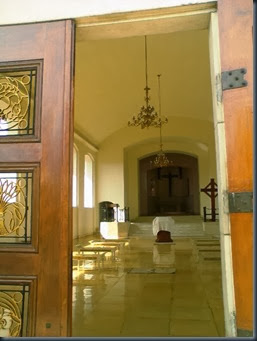






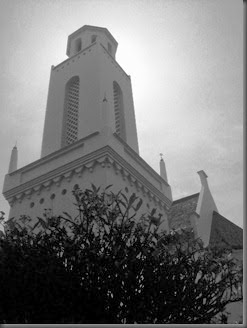
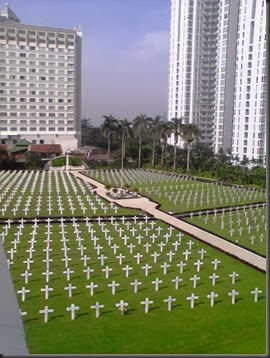

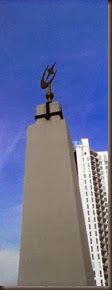






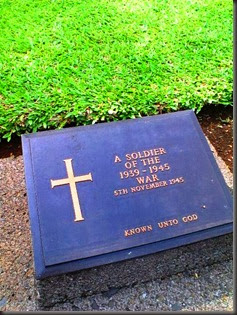


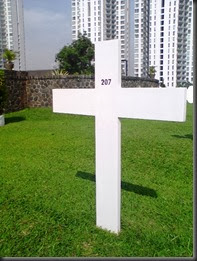




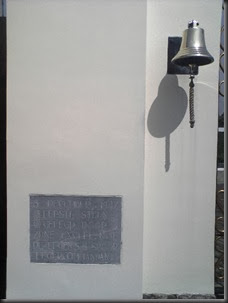

bang......saya......sangat tersentuh membaca ini!!!!
ReplyDeletedan satu komentar dari saya...
"BANG ARTINYA APAAN?"
Jangankan elo, gue aja kagak ngarti *plaaaak*
Deletegrammar englishnya mantapp abiss ajarin dong english sy kan parah :(
ReplyDeleteWaduuuw itu aja di atas aku blm yakin bener udah betul apa belum hehehe, udah modal nekad aja publish
Deletesuper sekali bung, sampe gue nganga lihatnya. ujung2nya cuma lihat foto dan terus scroll sampai ke comment, berharap ada yang senasib denganku. tapi salut karena udh bikin teks b. inggris, jarang2 lo (walau, maaf, agak meragukan keasiliannya)
ReplyDeletehaaaaa ... what di u mean by doubting the originality????
DeleteMijn Opa voor Opa is in Ereveld Leuwigajah♥Dank u voor Informatie. // Opa nya opa saya dimakamkan di sini , makasih infonya.
ReplyDeleteKalau mau visit ke Ereveld , harus hubungi ke Email diatas ? for what ?
I hope your grandpa rest in peace
Deletethe permission is only for people who want to take pictures in ereveld
How if I want to publish to website? it is website like yours. Thanks for Info.
ReplyDeleteWell based on my experience, I asked for another permission from OGS to publish the pictures. I also attached my articles so they could see the pictures I wanted to publish (in case they have some objection). But the people there, especially Mr. Steeinmeijer and Miss Ita were really nice and kind.
DeleteOtherwise, if you want to publish articles without any pictures, I think you don't have to ask for permission.
Your welcome, Angela
Ohh thanks for your answer. and how many ereveld have you ever visited in indonesia? only in Menteng Pulo? you can go to Ereveld Cimahi without perrmission if go with me hahaha
ReplyDeleteYou are welcome. Only one. I already moved to Surabaya so maybe I will visit the one in surabaya.
Deleteso philosophic
ReplyDelete"Evan"
Ini adalah artikel bahasa Inggris kedua yg saya baca dr awal sampai akhir tanpa skip, biasanya males bgt baca bhs Inggris (tim males mikir)
ReplyDeleteArtikel pertama yg pas anak2 smp tempat admin kerja ke museum Fatahillah